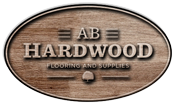Wood floors come in many types. In addition to traditional woods such as oak, birch, cherry, walnut and maple, many homeowners are now choosing bamboo for it’s durability, sustainability and affordability. While technically not a wood but a grass, bamboo cures to a hardness that rivals oak, and grows quickly, making it an environmentally sustainable product. You always have options, especially when your local hardwood store like us is offering so many different varieties of wooden floors.
Why Finish Wood?
While choosing which type of wood finish to apply to your wood furniture, floors or other woodwork projects might be a dilemma, we can all agree that applying a good finish to your wood is absolutely essential.
Without a good finish, wood is likely to deteriorate – it may dry, crack, or swell if exposed to moisture, or shrink due to other weather changes. A good wood finish not only seals the wood against the elements, but also protects against accidental damage such as stains or scratches. Wood finishes also enhance the appearance of the wood by adding color and contrast.
Types of Wood Finishes
Types of wood finishes have evolved over time with various consumer demands. The two main players in the market are penetrating oils and polyurethane finishes.
Penetrating oil finishes, typically derived from plants, do just want the name suggests – they penetrate and fortify the wood from the inside, at the same time allowing the wood to ‘breathe’. They have been around for several decades, and have a long tradition of use in Scandinavian countries.
Polyurethane finishes on the other hand, are a blend of synthetic resins that harden into a protective plastic-like coating on the surface of the wood. These were developed to meet the consumer demand for a type of wood finish that is very durable, and the mostly widely used are water-based and oil-based.
WOCA’s Premium Penetrating Oil, Diamond Oil Active
Extremely durable wood finish
Plant based
Resistant to liquids such as water, coffee, tea and red wine
Gives the wood a beautiful, breathable surface
Approved for indoor use
Low VOC
isocyanate free
Low odor
Can be used on all wood species, including Exotic.
9 popular colors available.
Experiment to find the right products for your floor type.






